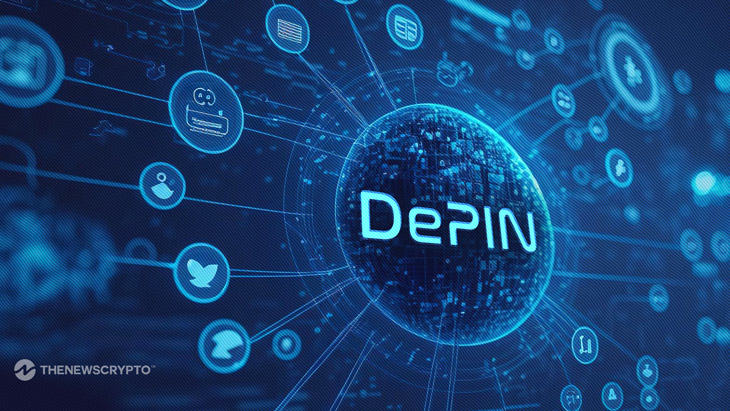- DePINs redefine networks with decentralization, crypto incentives, and trustless data exchange.
- It offer diverse applications, from decentralized WiFi to healthcare, transforming industries.
In the ever-evolving landscape of Web3, the DePIN, or Decentralized Physical Infrastructure Network, has emerged as a game-changer, offering decentralization, user ownership, and data sovereignty to various industries. As traditional crypto exchanges faced great challenges last year, the spotlight shifted to DePINs, holding the potential to rebuild public trust in blockchain technology.
In this article, we’ll delve into the DePIN concept and explore five top projects implementing this innovative model.
What is DePIN?
Understanding the Decentralized Physical Infrastructure Network
The DePIN, or Decentralized Physical Infrastructure Network, represents a paradigm shift in how network services are provided. It operates on the principles of decentralization, eliminating server-based architectures and introducing crypto incentives for deployers. DePINs consist of geographically dispersed physical nodes that collectively verify and transfer data using consensus algorithms, enabling trustless, intermediary-free data exchange.
Unlike traditional server-based models, DePINs use a distributed setup that enhances network reliability and security. The nodes in DePINs implement self-executing smart contracts, automating network protocols without the need for a central intermediary. The data transmitted over DePINs is not handled by a central server but is instead stored and verified in a distributed and automated way.
Here are some of the top five trending DePIN projects currently in the market.
MetaBlox
MetaBlox is at the forefront of the design revolution, providing free and secure WiFi roaming services globally. Users deploying MetaBlox routers as nodes in the DePIN not only establish strong WiFi connections but also earn future MBLX tokens as rewards. The more connections a router facilitates, the more tokens the host earns, creating a decentralized WiFi ecosystem.
Hivemapper
Hivemapper transforms dash cams into a dynamic world-mapping DePIN, rewarding users with HONEY tokens. By installing compatible cameras and connecting to the Phantom app, drivers earn tokens as their cameras upload visual data to the Solana blockchain. The collective data creates an interactive map, and users can also contribute by evaluating and annotating cam data, enhancing the network’s accuracy.
Planetwatch
Planetwatch incentivizes citizens to monitor and upload local air quality data using Bluetooth or WiFi-connected sensors. Hosts of these sensors receive PLANETS tokens as rewards, which can be traded or exchanged for crypto/fiat. With over 40,000 active sensors deployed, Planetwatch’s DePIN approach not only benefits individuals. But also contributes valuable air quality data for scientific analysis.
GhostDrive & Filecoin
GhostDrive has harnessed the power of the Filecoin DePIN to create a user-friendly storage platform. Computer owners can rent out disk space for cryptocurrency rewards in FIL tokens. Leveraging the InterPlanetary File System (IPFS), Filecoin ensures decentralized storage without relying on central servers. Moreover, GhostDrive offers a cost-effective alternative to traditional storage solutions.
HealthBlocks
In its Beta stage, HealthBlocks is pioneering the integration of DePINs into the medical realm. Users earn HEALTH tokens for making healthy decisions and sharing biometric data, all verified and stored on the IoTex blockchain. With a focus on user goals and diverse health data, HealthBlocks aims to revolutionize healthcare by providing crypto rewards for proactive well-being.
Conclusion
These five DePIN projects showcase the versatility and potential of Decentralized Physical Infrastructure Networks. From revolutionizing WiFi services to incentivizing air quality monitoring and healthcare data sharing, these projects offer unique opportunities for both users and providers.








